- Camping Tips
- Hiking Tips
- RV Camping
- Destinations
- Blog
- Gear Reviews
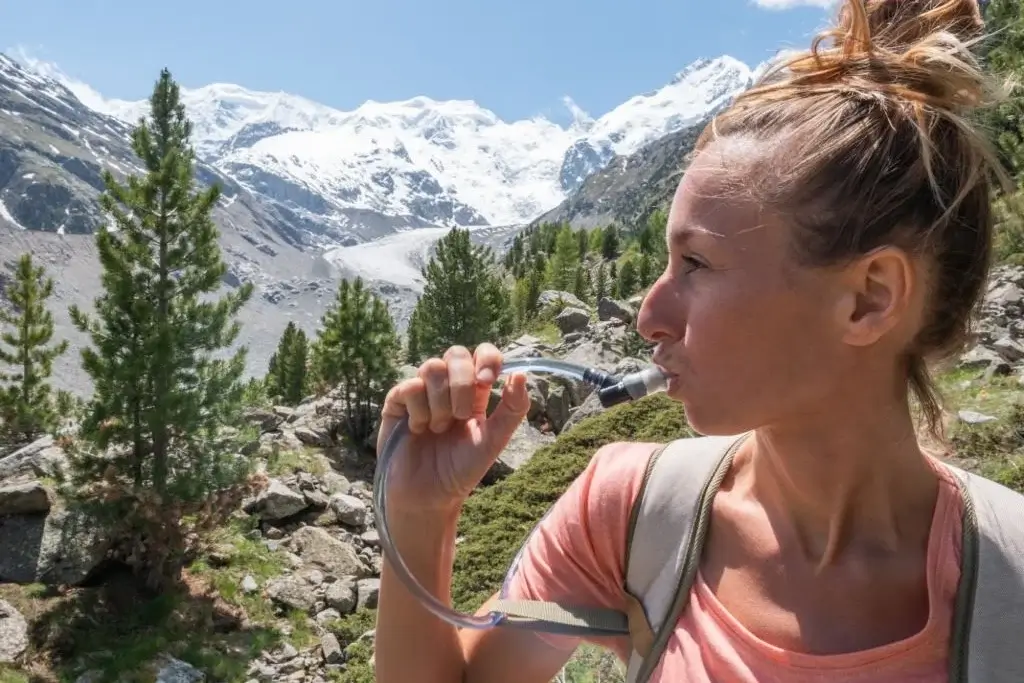
It's no question that the availability and accessibility of clean water is a key determinant to your performance when you go out skiing, hiking, running, mountaineering, camping or general backpacking. And that's where a hydration bladder comes in. Can you efficiently access your water when you need it?
Hydration bladders are arguably the best way to carry water while adventuring the outdoors. Moreover, they come with other benefits such as ability to fit flawlessly in a backpack with ease of drinking even when both your hands are engaged.
Nevertheless, hydration bladder reviews may not tell you that nearly all suitable water bladders for your general backpacking may not be so helpful when you are on a tough hiking expedition.
Hydration bladders are classified based on their properties and technical features. It is this classification that determines their most appropriate purposes. If you are looking for a water bladder, this article should guide you to an informed decision.
That, and many more, are some of the most glaring gaps that we intend to bridge in this elaborate article.
Q: How Do We Classify Hydration Bladders?
A: Hydration bladders are classified depending on their features. Some of the classification criteria include;
Why would you consider the type of opening of a hydration bladder? To start with, the type of opening of a hydration bladder determines how hard or easy to fill your hydration bladder will be. I bet you wouldn't want to go through a demanding process just go have your bladder filled.
On a different note, the type of opening also determines how easy or hard opening your bladder might be. If you do not learn the opening mechanism of the hydration bladder properly, then you may as well run the risk of leakages. Let's see the common types of opening.
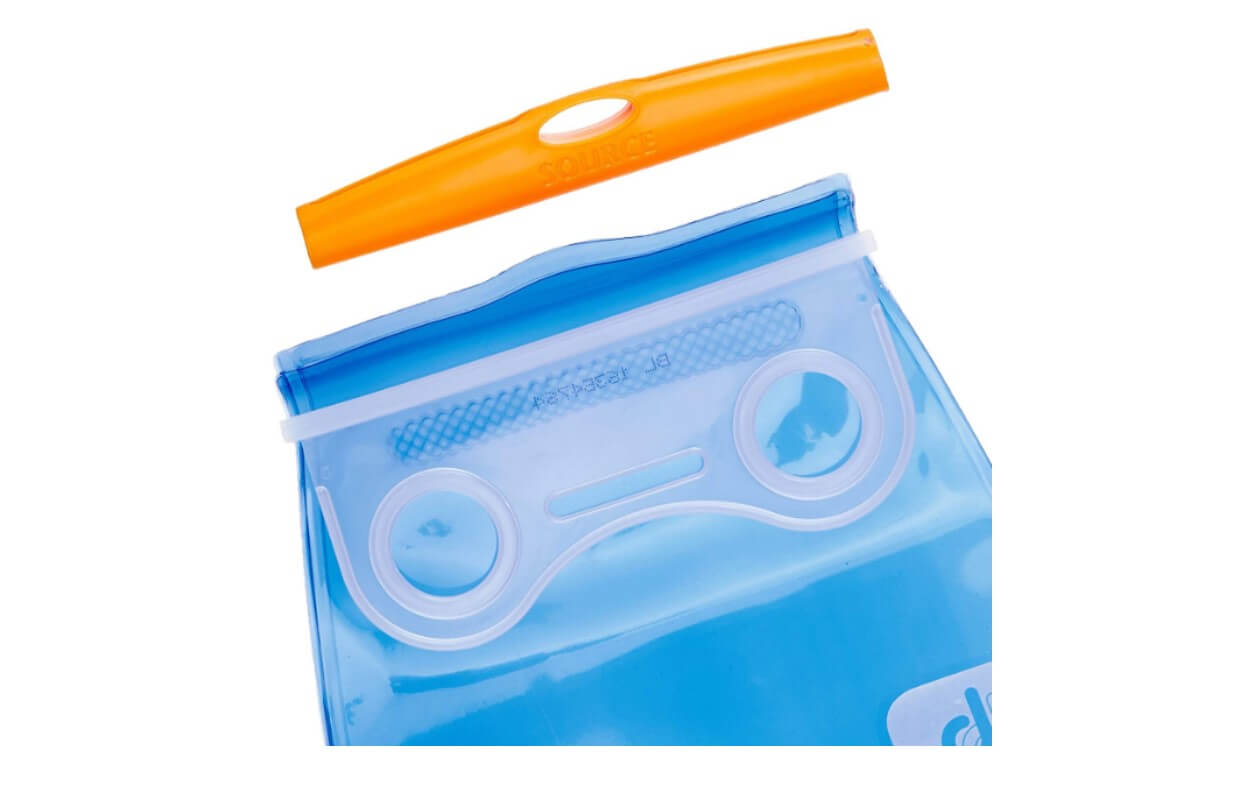
This is one of the closure types that guarantee no chance for leakages. With this mechanism, the top part flips up and efficiently folds over. Once the folding is done, simply slide the closure over the top. Doing this reduces any chances of possible leaks.
Again, this mechanism is the best if you intend to use streams and rivers as your main sources of water. Filling the fold-top opening type of water bladder from streams in areas where resources are limited is a breeze. Another important point to note is that this type is arguably the easiest to clean. You can easily turn the bladder inside out and clean properly.
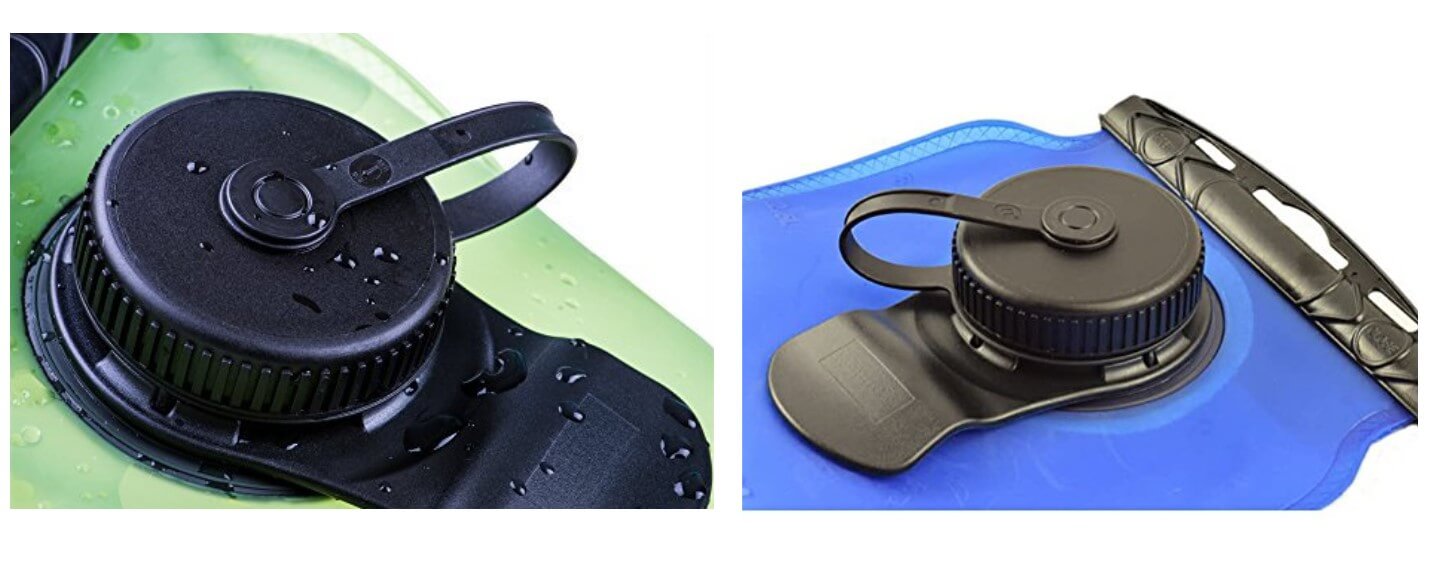
Many people like this type of bladder. However, I would say that it is one of the most difficult bladders to close and open. Secondly, opening or closing this type of bladder will certainly take you more time than other bladder openings.
Again, given the small sizes of most screw cap openings, cleaning them isn't the most enjoyable activities. Most require use of cleaning kits that include a cleaning brush to cover all the nooks. If not properly maintaned and cleaned, mold and bacteria will have a home in them.
Don't get this twisted; the bladder is not all that bad as it comes with a myriad of advantages. To start with, this bladder type has a shallower basin and this makes it a very versatile option. Its versatility makes it the most ideal bladder opening for long trail hikes, camping trips as well as long distance running. This is because this group of outdoor enthusiasts have the time and ability to fill the bladders up without any trouble.
Another advantage of the screw cap opening type of water bladders is that you have the luxury of filling it up to the brim unlike the other types of openings that are impossible to fully fill up.
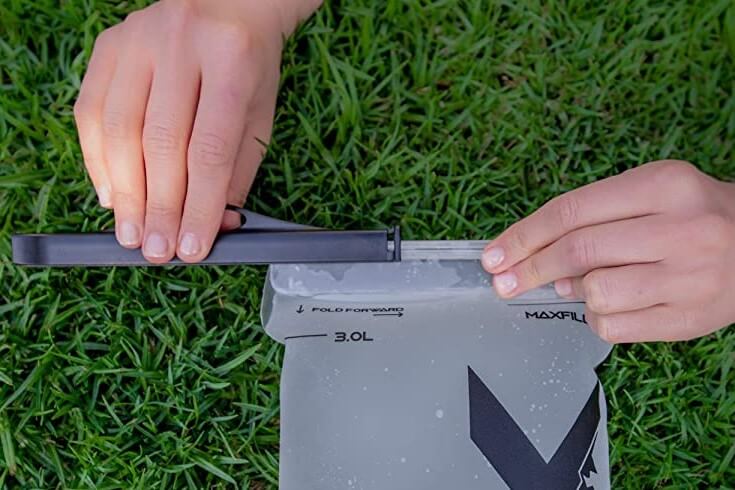
A zip-top opening and a fold-top opening share most features. Just a few features mark their differences. While a fold-top system has a flipping top that is folded over before being fully closed, a zip-top opening, like the name suggests, uses the zipping system to keep it fully closed and avoid leakages.
They are the easiest to open and fill hence the reason many runners prefer them. However, as you may understand, arranging and closing up the zip will eat up a couple of extra seconds. Despite that, these are still the best option for slow moving water sources and regular faucets.
Zip-top bladders are almost impossible to turn inside out hence cleaning them will take a little bit more time.
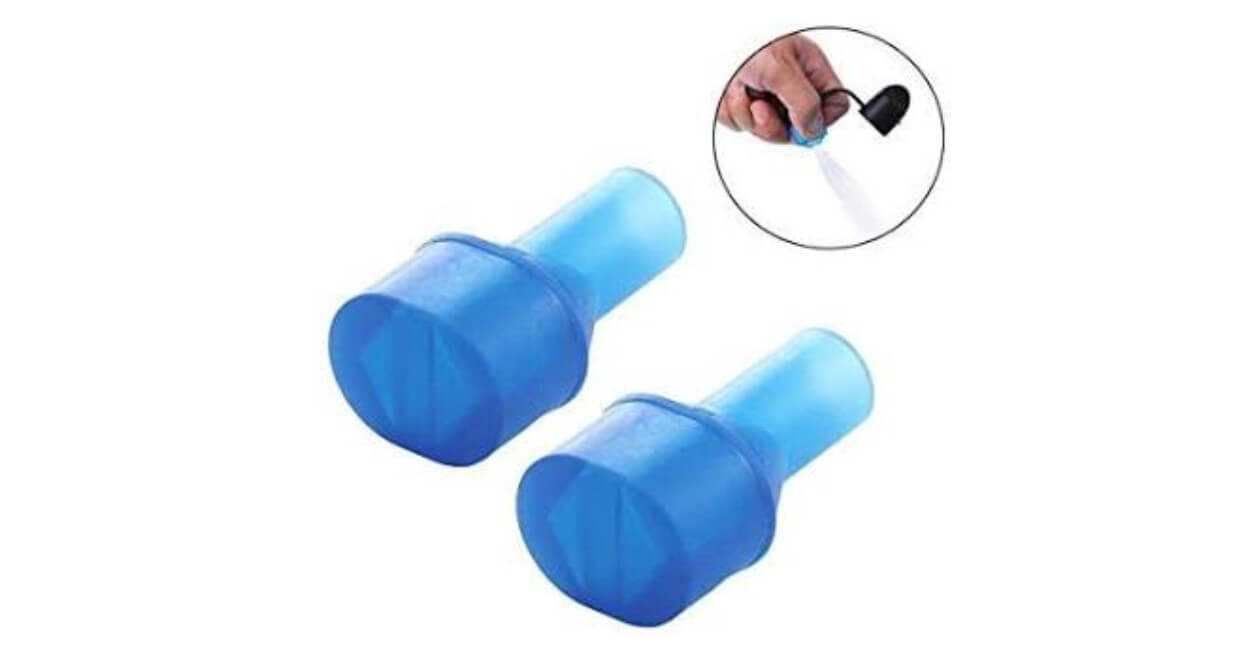
Why would the bite valve size worry you? Well, the bite valve size determines the amount of water flow you receive from a bladder. Secondly, the bite valve size is the key determinant of how hard or how easy you draw your water from the bladder.
Well, there are outdoor activities that will still be possible even when you have to use a lot of energy to suck up water from your water bladder. On the other hand, the efficiency and enjoyment of some activities will almost be impossible if you have to use half of your energy to enjoy the refreshing sips from your water bladder.
Bite valve sizes come in 3 categories; small, medium and large. Smaller valve sizes will certainly provide a little flow of water while the bigger the valve size, the more volume of water you receive. Again, it is worth noting that smaller valves are more difficult to pull up water from as compared to larger valves.
Medium valves are most preferred by runners. This is because while they are generally easy to suck water from, they provide a sufficient flow of water.
The type of material and the workmanship of a hydration bladder are the key components that determine the durability and weight of a particular hydration bladder. Additionally, the safety (or toxicity thereoff) of a hydration bladder is determined by the material used in its construction. The type of material your bladder is made from is therefore something you should highly consider.
Well, most hydration bladders today are made from polyurethane (specifically the lightweight thermoplastic polyurethane, the type that melts when heated) and polyethylene. The famous Camelbak hydration bladders are made from polyurethane.
The components that form polyurethane are toxic but quickly lose their toxicity when properly bonded. Therefore, you shouldn't expect any harm in using polyurethane hydration bladders. Still, plastic flavor in water is the major disadvantage with polyurethane hydration bladders.
While the thermoplastic polyurethane used in the manufacture of hydration bladders is relatively thin and flexible, these bladders are still strong and will serve you diligently for a long time.
Perhaps a more durable, more flexible and safer alternative is polyethylene. Most modern hydration bladders such as the Source Tactical WXP and the Deuter Streamer utilize polyethylene in their manufacture.
The biggest advantage of polyethylene over polyurethane is the plastic-free taste. While bladders made from the latter will take time and multiple uses to dissipate the plastic flavor, the ones made of polyethylene never feature this unpleasant taste from the word go.
Other hydration bladders such as the Hydrapak™ Velocity and Platypus Big Zip make use of a combination of both Polyethylen (PE) and Thermoplastic Polyurethane (TPU) to get a taste of both worlds. Additionally, the Hydrapak™ Velocity incorporates Silicone in its construction, to make it more flexible and resistant to grease.
As you may already be knowing, almost all hydration bladders containing BPA (Bisphenol A), BPS (Bisphenol S) and phthalate have been deprecated due to the harmful effect the said compunds have to human health. We never recommend such hydration bladders in our reviews.
It is important to purchase a bladder that has a built-in antimicrobial feature. This technology helps your bladder remain fresh for a long time.
Well, it is important to still take time and wash your bladder in between uses. Bladders may sometimes have some bad smell if not cleaned well between uses.

Hydration bladders are also classified depending on the type of pumping system that they use. Pressurized systems are able to push up water through the hose without necessarily having to suck. On the other hand, you will have to suck up water if you want to enjoy a sip from the non-pressurized system.
The structural difference between the pressurized and non-pressurized bladders is the fact that while the pressurized system has two chambers, the non-pressurized system has just a single chamber or compartment. On the pressurized system, one chamber is for air while the other chamber is for water. Fill up the air compartment with air using the incorporated pump to pressurize the reservoir.
Pressurized systems have the following advantages;
However, whatever the type of bladder you opt for, it is ideal to always clean your bladder properly whenever you use it for sugary drinks.

Another important factor that is used to classify hydration bladders is capacity. What quantity of water do you need for your outdoor mission? What hydration bladder capacity would satisfy your hydration needs? Will you have nearby water sources to frequently fill up your hydration bladder?
Well, the above and many other questions should help you decide on what hydration bladder capacity would be most ideal for you. The following are the main categories of hydration bladders based on capacity.
These are the smallest in capacity and lightest in weight. They are therefore very portable hence preferred by children and minimalists. If you intend to go for a quick hike or a run where speed will be of much benefit, then this should be your kind of hydration bladder. They will also be useful in areas where there are so many water sources for possible refills.
These are medium size bladders. They are the most popular capacity because they won't subject you into very frequent refills. The moderate amount of water contained in these bladders is relatively enough for the day.
They are very versatile hence popularly perfect for skiing, hiking, running, snowboarding and hiking and many other outdoor activities.
Three liters of water is just about what you need for a whole day of hiking or trail running. This capacity therefore provides the perfect option for athletes who do not intend to spend a lot of time refilling their hydration bladders every now and then.
With 3 liters of drinking water, you are certain that you have enough or almost enough of water for your entire trip. However, if you get thirsty too often and may need more water than 3 liters then you may consider tagging along two of these or this one and a smaller one. Is 6 liters not too much for you?
If you are going to take long in the wilderness then it is only realistic that you haul along enough water. Even if it means you will use the water just for drinking, we all know that drinking water must be clean and safe.
This category of water bags is therefore ideal if your stay outdoors may be a bit longer. Moreover, these bags will prove useful in places where you are not certain about the availability of water sources.
With or without water filters, carrying a moderately large water container during your camping or backpacking trips is one thing you need to consider. Water bags of these capacities not only help you to store water but also save you the hassle of running to the water point.
Another advantage of this category of water bags is the fact that they are incredibly portable as what you need to do is pour out its contents, fold it and stuff it in your backpack. Amazing, right?
More people mean more need for clean water. Again, if you intend to have more than a day of camping then it is only logical to have a water storage mechanism. With this capacity of water bag, you do not need to rush to the stream or pond every time you need water.
These water storage bags are a valuable addition to your camping or hiking gear. You have water within your camping site, enough water to do your dishes, quench your thirst, prepare simple meals and bathe without having to make frequent trips to the water source. Just like the preceding sizes, they are potable as you can fold them when empty.
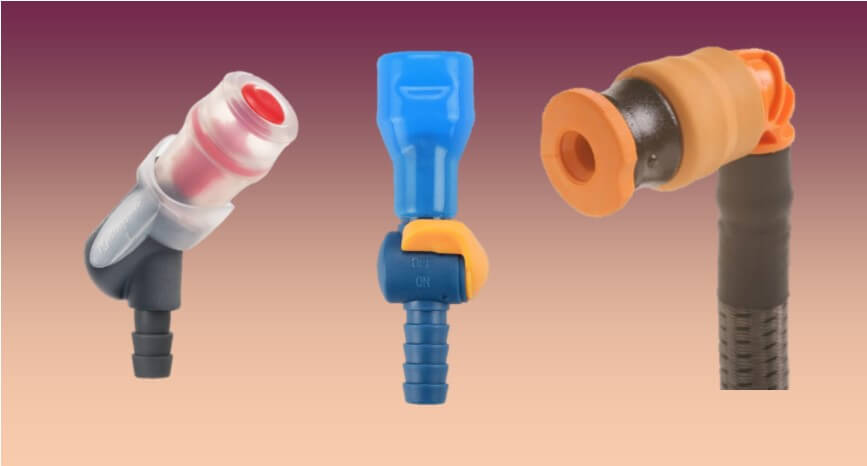
A good locking mechanism helps to prevent unnecessary leakages of your bladder. They further help in efficiently allowing water out when you need it. So, an ideal locking system should be reliable in both ways.
We have three types of hydration bladder locking systems. They include switch valve-locking mechanism, turn/twist valve-locking mechanism and a push-and-pull valve-locking mechanism.
Just with the help of a single hand, you can easily operate the on-off switch valve as it is not susceptible to jams. It is also easy to clean. Finally, the switch and the drink in the bladder are not in contact so you are always sure that your drink of choice is safe from contamination.
With just a single turn, the turn valve (also known as twist valve) will effectively lock the hose hence no leakage. A twist in the opposite direction unlocks the hose so you can enjoy your drink of choice. Again, it is important to note that just like switch valves, bladders with turn locking mechanisms are easy to operate and clean.
The push-and-pull locking mechanism is relatively new in the market and amazingly reliable. There is a lot to be said about this valve-locking mechanism. In fact, it has several advantages. The only downside of this system is that when sugary or alcoholic drinks are used in the bladder, it should be thoroughly cleaned immediately after use. If this is not done then there is risk of jamming the system.
The type of hose is essential for cleaning as well as weather. Take a look at the classification.
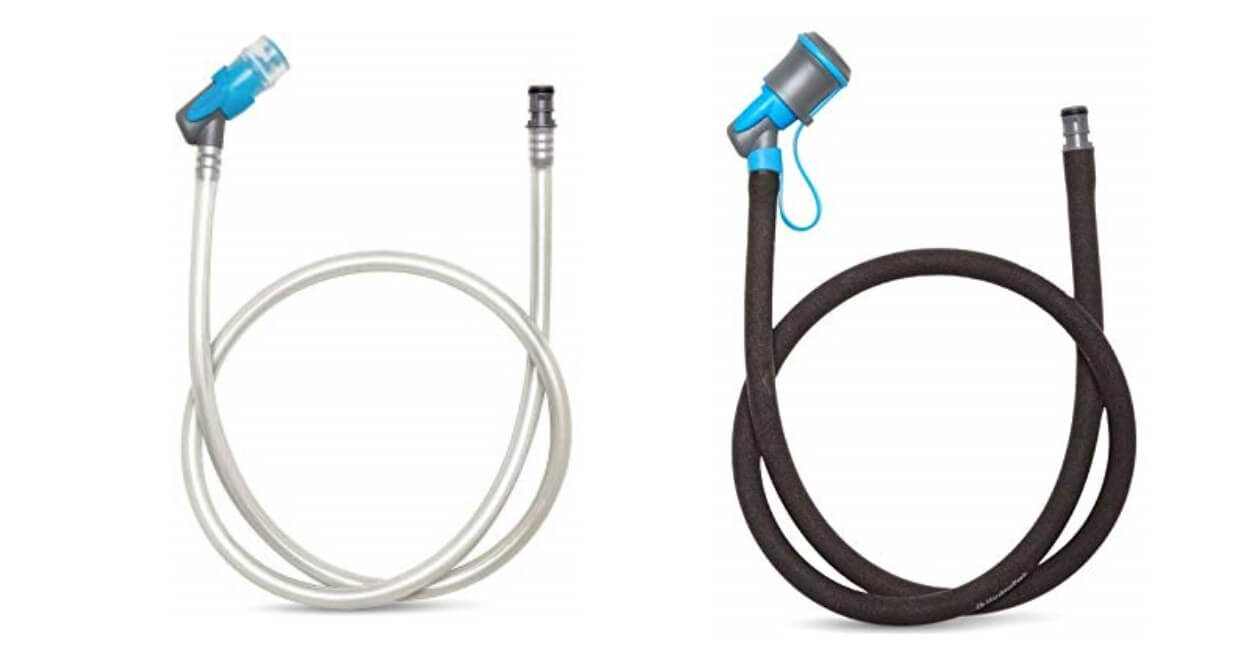
Most hydration bladders come with clear hoses. These are popular because you can easily see if the hose interior is dirty or has some clog. Washing these types of hoses is also easier as you can see what's inside the hose. Under normal weather, most people would go for these transparent hoses.
Opaque hoses are stylish and come in a wide range of colors. Again, the opaque hoses may often come with an insulation option. The only demerit of these types of bladder hoses is that you have to take your time and clean them properly as you are not able to see what is in. Molds can easily form in the dark insides without you noticing.
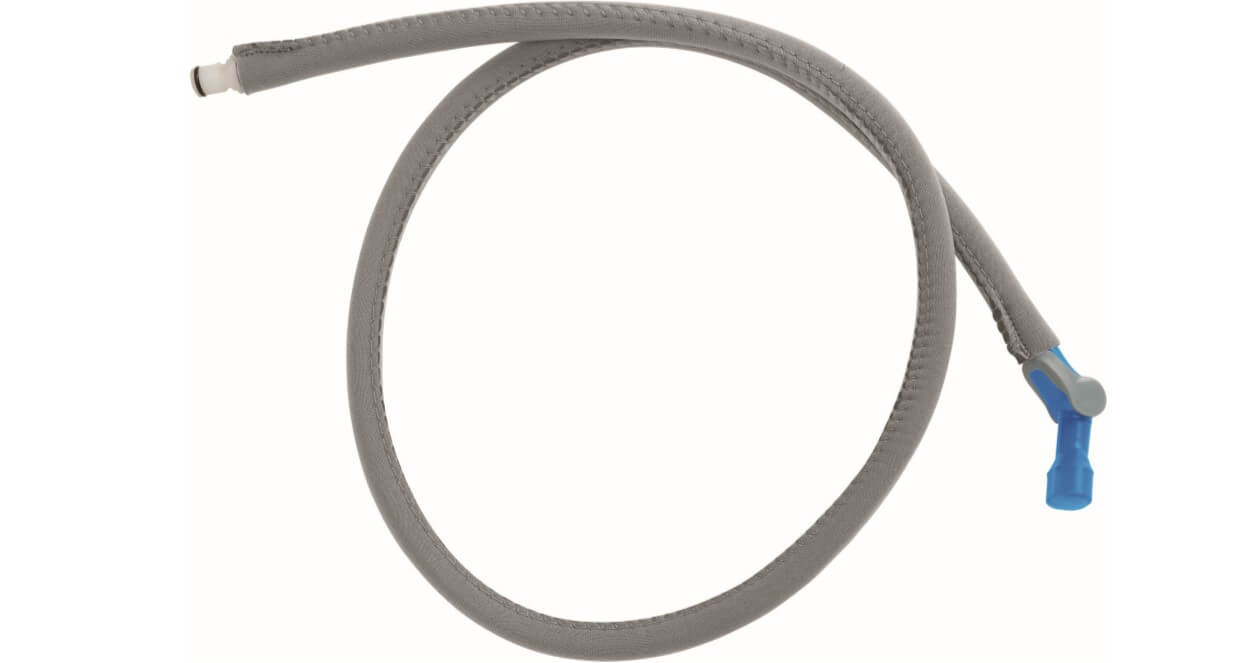
There is no harm in using any of these hoses. The only problem is that on a harsh winter season, an ordinary non-insulated hose will have water within it freeze hence hampering accessibility. In summer, the water within the hose will heat up making the first few sips unpleasant.
While you are not likely going to need water in a winter morning, you will most definitely need to drink some water when skiing, running or exercising in winter.
These factors give insulated tubes an upper hand over their non-insulated counterparts. If you want to wither both summer and winter weathers, consider going for a hydration bladder with an insulated hose.
Charlie Leone
Website Owner/Editor
Welcome to CampingManiacs